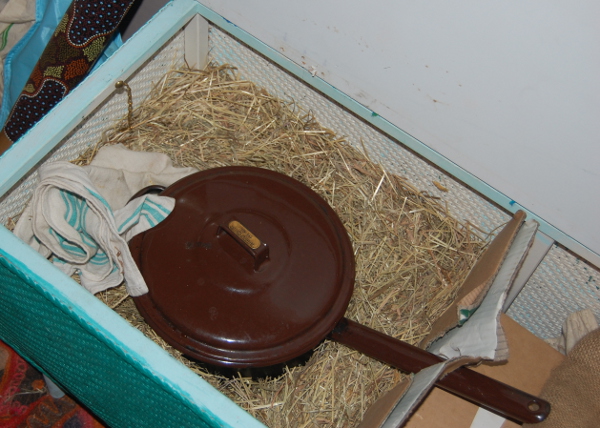
“Using a haybox can easily save up to 50% of the energy required to cook food. This is because instead of the heat from a saucepan being lost it is trapped by the insulation and used to heat and cook the food.” – Seggy Segaran
What is retained heat cooking?
If removed from a cooker, food in a cooking pot will continue to cook until the pot cools down. Placing the pot in an insulated box to prevent cooling means that the food will continue to cook without the use of further fuel. This is known as retained heat cooking, aka thermal cooking, haybox cooking, sit boiling or fireless cooking.

Traditionally the insulation was straw or hay, hence the name haybox. In the middle ages, earthenware pots were used in a hole in the ground insulated with moss, leaves or hay; and in the 1940s Girl Guides were taught how to make a haybox using a large biscuit tin and straw. Nowadays we have better insulating materials and you can make a very efficient haybox (although hay still works, of course). It is one of many different low-impact cooking methods.
Really good introduction to retained heat cooking.
The energy savings can be dramatic. For example, potatoes or rice are normally brought to the boil and then simmered for 15-20 minutes. If they’re brought to the boil and then the pot is placed in a haybox, that’s 15-20 minutes’ worth of fuel saved. Modern cookers based on the haybox principle are commercially available from the usual outlets. Known as thermal cookers, they use an outer vacuum flask with a removable inner stainless steel cooking pot. They work in the same way as the traditional haybox, but are smarter-looking and more expensive.
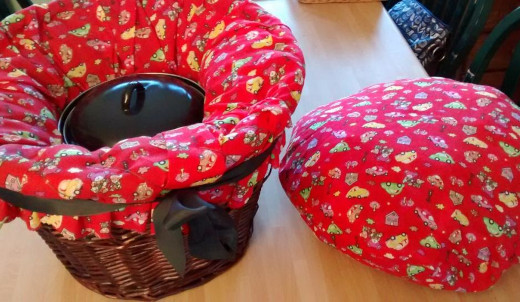
What are the benefits of retained heat cooking?
- A haybox cooker can save up to 80% of the energy used to achieve the same results by simmering, so there are both economic and environmental benefits – i.e. cash saved and much lower pollution / CO2 emissions.
- Food cooked slowly at a lower temperature tastes nicer and is better for you, as more of the vitamins are retained.
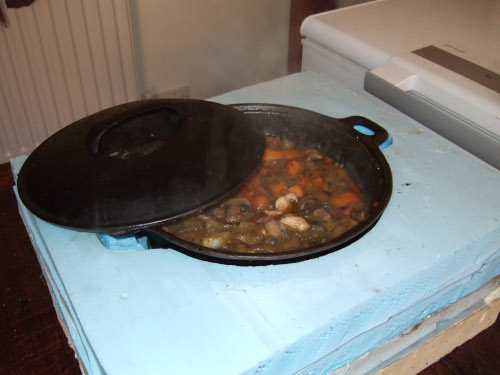
- Retained heat cooking times are not critical; leaving the pot in the haybox ‘too long’ doesn’t harm the food (unlike boiling which turns vegetables to mush), so preparing several dishes to be ready at the same time is easy; this is particularly useful if you only have a single-burner cooker.
- Once the initial boiling is over, the pot can’t boil over and will not burn the food – so it can be left unattended, freeing up time; hence The Idle Hour Cookbook, published in 1927 by Chambers Manufacturing, extolling the virtues of their ‘Fireless Gas Range’.
- The amount of water used to cook rice, potatoes or beans can be reduced a little because there is little or no evaporation with retained heat cooking compared to normal simmering.
Our advisors, Seggy and Jane, run workshops in India helping villagers set up solar cookers and hayboxes to cook food slowly (improving nutrition) and without burning firewood.
What can I do?
Make a haybox cooker
You can, of course, use a box full of hay, if hay is available where you live. If not, you could use a box / cooler with old towelling and textiles, or even wrap the pot in a sleeping bag. Here’s a way to build a ‘haybox’ cooker from scrap insulation board.
- Choose a pot: the lid has to fit well, and the size is important, as the pot needs to be full for it to work properly – so select a pot that matches the number of portions you normally cook.
- Acquire some insulation board; this can be bought from builders’ merchants or found (skips may be a good source).
- First cut a square that’s bigger than your pot for the base. Cutting can be done with a saw or knife (wear a mask to protect against dust). Some types of board cut more easily if the knife has been heated, but make sure you’re in a well-ventilated area.
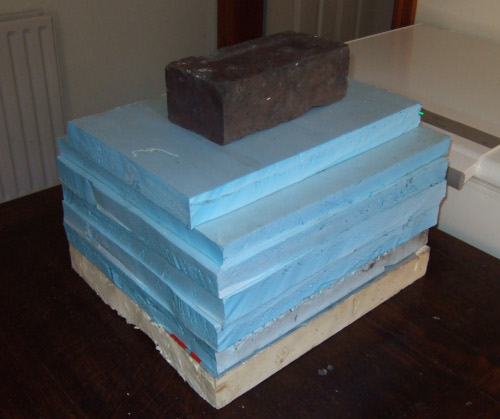
- Cut several more squares the same size until you have a pile that’s a little taller than the pot.
- Mark and cut a circle from the middle of one of the squares so the pot fits through (the board must fit closely around the pot).
- Continue cutting until you have a pile of pieces with a solid top and bottom and a hollow centre.
- You can put the whole thing into a box, but insulation board is quite solid so you don’t actually need a box – you can just fix the boards together somehow, or put a weight on top.
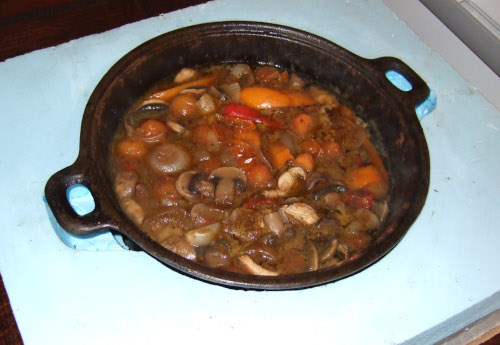
Cooking with a haybox
- Bring the pot to the boil on the hob in the normal way (although you don’t need quite as much water, as less is lost through evaporation).
- Simmer for a couple of minutes to make sure that all the contents and lid are up to boiling temperature.
- Remove from the heat and transfer to your haybox.
- Place a brick or similar weight on top to make sure there are no gaps between the layers of insulation board.
- Allow your food to cook for around twice as long as simmering on the hob – but there is no harm in leaving it longer; for example, you can leave potatoes or rice for over an hour, and they’ll be fine.
- Don’t keep opening the haybox to check on your meal – it won’t burn; opening it lets some heat out which is not replaced.
- NB: make sure your food has boiled thoroughly before putting it into the haybox; there’s a risk of bacterial growth if not.
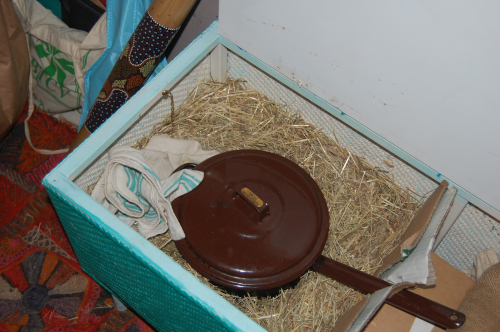
Estimated cooking times
As a rough rule of thumb, for retained heat cooking you can at least double the normal cooking time. However, it’s difficult to specify precise times as a little longer during the boiling stage would mean a lot less time in the haybox. The size of the food also makes a difference; whole potatoes need more time than if cut into quarters, for example. If you find the food is not cooked through you can do a second short boiling at the end. After a little practice you’ll soon learn what works for you and your haybox. Here are some recommended cooking times.
| Food | Boil time | Haybox time |
| Rice | 5 min | 1-1.5 hours |
| Potatoes | 5 min | 1-2 h |
| Soup and stock | 10 min | 2-3 h |
| Green Lentils | 10 min | 3-4 h |
| Pinto beans | 10 min | 3 h |
| Split Peas | 10 min | 2 h |
| Quinoa | 5 min | 1.5 h |
| Millet | 5 min | 1 h |
| Polenta | 1 min | 1 h |
| Winter Squash | 5 min | 1-2 h |
| Steamed bread | 30 min | 3 h |
| Chicken | 6 min | 2-3 h |
| Beef | 13 min | 3-4 h |
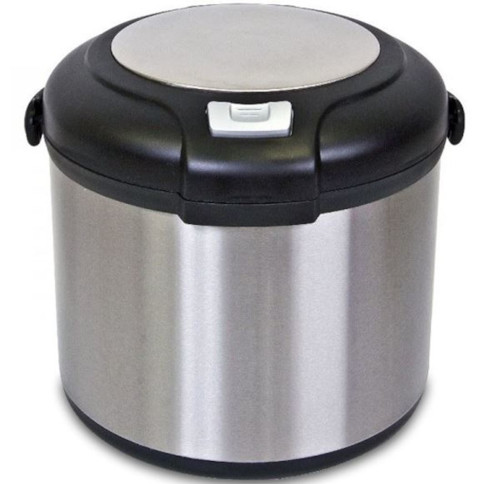
Using a thermos flask
For cooking small amounts (say a single portion of rice or pasta), a quality thermos flask can be used in a similar way. The principle is the same as the haybox, but as the flask itself can’t be heated, follow these steps: pre-heat the flask with boiling water; bring rice/pasta to the boil in a saucepan; empty the flask; carefully pour (use a jam funnel if you have one) the contents of the saucepan into the flask; seal and leave to cook. Don’t hold the flask in your hand when pouring, in case you spill the boiling water. Don’t forget that rice and pasta expand when they cook so don’t fill the flask to the brim, and be careful when opening in case the flask has become pressurised.
Integrated cooking
Retained heat cooking can be used in combination with solar cookers and rocket stoves. This combination enables you to cook at any time, rain or shine, without fossil fuels. See our solar cookers intro for more information.
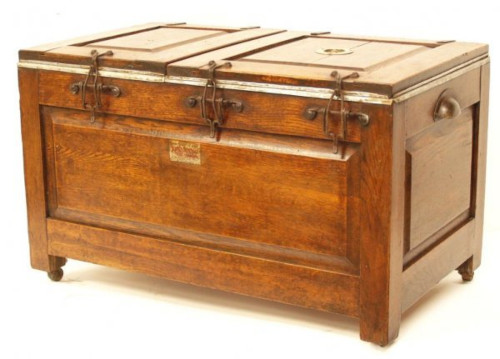
Thanks to Steve Williams and Seggy Segaran for information and pics.
Whilst you’re here, why not take a look at the other 25+ food and drink topics available? And don’t forget to visit our main topics page to explore over 200 aspects of low-impact living and our homepage to learn more about why we do what we do.
The specialist(s) below will respond to queries on this topic. Please comment in the box at the bottom of the page.

Jane and Seggy Segaran run SF Environmental, and have been involved for many years with low-energy cooking techniques. Having tinkered with solar cooking and rocket stoves, their main focus is now haybox cooking. Their publication Haybox Cooking – Save Energy with Fireless Cookers is available for sale and part of the proceeds of sales goes towards funding educational projects on fireless cookers in East Africa.
The views expressed here are those of the author and not necessarily lowimpact.org's
14 Comments
-
1Joe Moondad December 3rd, 2016
great idea but would the pot melt or burn the foam insulation?
-
2Marg Ducharme February 17th, 2017
I use my laundry basket, with an old pillow. Wrap my heavy pot in an old towel, put it in the basket on the pillow, and put another pillow over top. I usually cook my rice this way, and beans. the beans would take longer,and should be soaked overnight,also boiled for a bit to make sure they were well heated thru.the rice will keep hot for about 6 hrs this way.,saves time after work.
-
3Seggy Segaran July 26th, 2017
Hi Joe, The cooking pot and food temperature will be a maximum of 100 deg C. This is due to the water content in the food and the boiling point of water. Polystyrene foam does not decompose or burn until temperatures of 200 deg C is reached.
So it should be quite safe to use polystyrene foam as an insulator in haybox cooking.
-
4Paula Whittell July 30th, 2017
I use an old box lined with an old duvet, and it can keep the pot cooking for ages and is still too hot to pick up the next morning. Stocks are particularly good. The flavour is better, and you don’t get a kitchen full of steam. great article.
-
5Barbara Bristow March 19th, 2018
Recently I found a large polistyrene lidded box in a charity shop for £1. It’s similar to what fresh fish comes in but doesn’t smell of fish! I’m going to use it make a cooker.
-
6Elizabeth Fletcher August 16th, 2018
Excellent artical! One concearn though- If useing hay for the haybox, what prevents it from spontainious combustion, when the risk of self ignition of hay starts as low as 65 degrees C? What stops this from happening, or is it just a risk to watch out for?
-
7Seggy Segaran August 19th, 2018
Hi Elizabeth, that’s an interesting question. It appears that if the hay has a high moisture content then it is more likely to spontaneously combust. I don’t think that this risk is high in a haybox cooker as there isn’t enough hay for this to happen – but not sure. Have to say that of all the different haybox cookers that I have built none have used hay. Much easier to build a retained heat cooker with old sleeping bags, towels or blankets.
-
8Dave Darby August 19th, 2018
Our friends Adrian & Kath at Wholewoods use hay – in fact that’s their haybox in the main image. They put very hot pots of food in there, and they’ve never had any problems.
-
9Kiggundu Nicholas July 9th, 2020
I just want to try using it, can someone helpe know more about it….? Otherwise hello to you and lovely greetings from Uganda Africa.
-
10Birgit Lenderink April 19th, 2023
I just finished building my large RHC(for 53QT stock pot) and put it to the test. Would love to share pictures but do not know how.
I move the heavy pot from the fire onto the RHC base (which is on wheels), via a small removable bridge with roller balls.
Before the cover is put over the pot and onto the base, the pot receives a liner.
Today's result of a 48 hour test on 44 liters of boiling water:
Beginning 12:41PM Monday, 17 April 2023 an ending 12:41 PM Wednesday 19 April 2023.
44 Liters of boiling water @ *96°C down to 66.5°C over 48 hours in a room with average ambient temperature of 25°C = Δ -29.5°C temperature loss over 48 hours in the retained heat cooker (RHC)
*Water at our altitude boils at 96°C
-
11Birgit Lenderink April 19th, 2023
I forgot to ask my question.
I cook bone stocks. At what temperature does actual cooking cease?
Let us say that I am I am harvesting collagen from beef bone and keeping in mind that stock from beef bone needs to cook for a minimum of 48 hours.
-
12Seggy Segaran April 20th, 2023
Hi Birgit Lenderink,
44 litres? sounds like a massive pot. Also drop of 29.5 deg C over 48 hours implies massive thickness of insulation. Can you please provide some more detail on both? thanks.
I have no idea on cooking bone stocks - sorry.
-
13Birgit Lenderink April 21st, 2023
Seggy Segaran
It would be easiest to show you in images but I used 2 different forms of Styrofoam insulation.
-
14Brenda Sullivan November 15th, 2023
i have two large square fibreglass (I think) outdoor planter pots. Would these be ok to use as hay boxes?




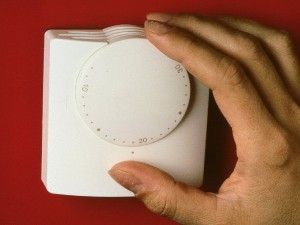 Energy saving
Energy saving
 Insulation
Insulation
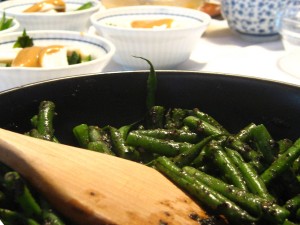 Low-impact cooking
Low-impact cooking
 Low-impact food & drink
Low-impact food & drink
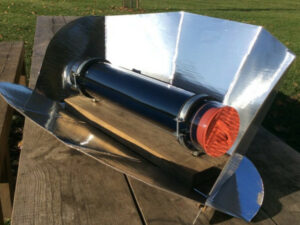 Solar cookers
Solar cookers


